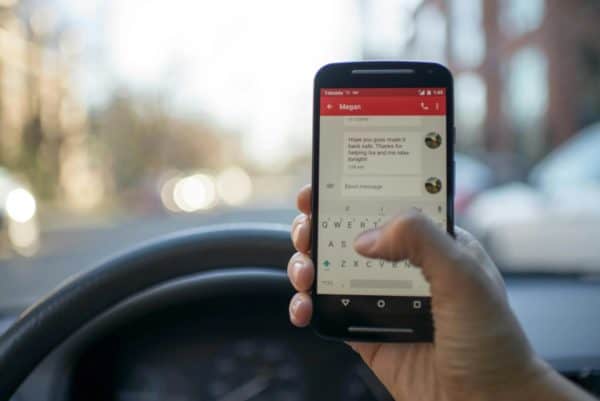In today’s online conversations, acronyms and abbreviations are common tools for quick and efficient communication. One acronym that has gained attention is TMB. If you’ve come across TMB in texts, social media posts, or online forums and wondered what it stands for, you’re not alone.
This article will explain what TMB means and how it’s used and provide examples to help you understand its application.
Definition of TMB
TMB stands for “Text Me Back.” It is an acronym commonly used in digital communication to prompt someone to respond to a previous message. The use of TMB can be seen across various platforms, including text messaging, social media, and online forums. It serves as a reminder or a nudge for the recipient to reply, ensuring that the conversation continues smoothly.
Use Cases of TMB

The use of TMB spans various scenarios where timely responses are essential or where the sender wants to ensure that their message receives a reply. Here are some common use cases:
1. Personal Conversations:
- Reminder for Response: In casual texting between friends or family, TMB is used to remind the recipient to reply. For example, if someone sends a message and doesn’t get a response, they might follow up with, “Hey, TMB when you can.”
- Urgent Matters: TMB can emphasize the need for a prompt reply when discussing time-sensitive issues. For instance, “I need to know if you’re coming to the party tonight. TMB ASAP.”
2. Professional Communication:
- Follow-Up: In a professional setting, TMB can be used to follow up on previous messages. While it’s less formal, it can be appropriate in friendly work environments. For example, “I sent you the project details earlier. Can you review and TMB?”
- Coordination and Scheduling: TMB ensures that the recipient acknowledges and responds to the proposed times or dates when coordinating meetings or schedules. For instance, “Are you available for a meeting tomorrow at 10 AM? TMB.”
3. Social Media and Online Forums:
- Interactive Posts: On platforms like Twitter or Instagram, TMB might be used in comments or direct messages to prompt a response. For example, “Loved your post! TMB with more details about your trip.”
- Community Engagement: In online communities or forums, TMB can be used to keep discussions active. For example, “I shared some resources on the topic. TMB if you have any questions.”
Examples of TMB in Use
To better understand how TMB is used in various contexts, let’s look at some examples:
1. Personal Conversations
Example 1:
Sender: “Hey, did you get a chance to look at the new movie trailer I sent?”
Recipient: (No response)
Sender: “TMB when you see it. I’m curious about your thoughts!”
Example 2:
Sender: “I just reached the cafe. Are you on your way?”
Recipient: (No response)
Sender: “TMB, so I know whether to order for you.”
2. Professional Communication
Example 1:
Sender: “I’ve attached the report for your review. Let me know if you need any changes.”
Recipient: (No response)
Sender: “TMB with your feedback by the end of the day, please.”
Example 2:
Sender: “We’re finalizing the agenda for tomorrow’s meeting. Can you confirm your attendance?”
Recipient: (No response)
Sender: “TMB to confirm, thanks.”
3. Social Media and Online Forums
Example 1:
User 1: “Here’s my latest blog post on sustainable living. Check it out!”
User 2: “Looks interesting! TMB with the link.”
Example 2:
User 1: “I’m planning a live Q&A session next week. Any topics you want me to cover?”
User 2: “I’d love to hear about your travel experiences. TMB if you can include that!”
Nuances and Variations of TMB
While TMB primarily means “Text Me Back,” understanding its variations and nuances can provide a deeper insight into its use. Here are some points to consider:
- Tone and Context: The tone of the conversation greatly influences how TMB is perceived. In casual chats, it comes across as friendly and informal. In professional settings, it should be used with consideration of the relationship and communication style.
- Cultural Differences: The usage and acceptance of acronyms like TMB can vary across cultures and regions. It’s important to be aware of these differences to avoid miscommunication.
- Platform Specificity: On some platforms, abbreviations and acronyms are more prevalent. For instance, in SMS and instant messaging, TMB might be more commonly used than in formal emails.
- Alternatives to TMB: Depending on the context, alternatives like “Please respond” or “Looking forward to your reply” might be more appropriate, especially in formal communications.
Benefits of Using TMB
The use of TMB offers several benefits in digital communication:
- Efficiency: Acronyms like TMB streamline communication, making it quicker to convey the need for a response without typing out a full sentence.
- Clarity: TMB clearly indicates that the sender expects a reply, reducing ambiguity and ensuring that the recipient understands the need to respond.
- Engagement: In social media and online forums, using TMB can foster engagement and keep conversations active, encouraging more interaction.

Potential Drawbacks of Using TMB
While TMB is a useful tool, it also has potential drawbacks:
- Informality: In professional or formal contexts, using acronyms like TMB can come across as too informal or unprofessional. It’s important to gauge the appropriateness based on the relationship and setting.
- Misinterpretation: Not everyone may be familiar with the acronym, leading to potential confusion or misinterpretation. It’s crucial to consider the recipient’s familiarity with such terms.
- Overuse: Overusing TMB can make communication seem robotic or demanding. Balancing its use with more varied and personalized language can enhance the overall tone of the conversation.
How to Use TMB Effectively
To maximize the benefits and minimize the drawbacks of using TMB, consider the following best practices:
- Know Your Audience: Understand who you are communicating with and their familiarity with digital acronyms. Use TMB selectively with individuals who are comfortable with such abbreviations.
- Context is Key: Use TMB in appropriate contexts. In casual and informal settings, it can be highly effective. In professional or formal communications, consider the tone and relationship before using it.
- Combine with Personalization: While TMB can prompt a response, combining it with personalized messages enhances its effectiveness. For example, “TMB with your thoughts on the project. Your input is valuable!”
- Be Clear and Polite: Ensure that the use of TMB does not come across as abrupt or demanding. Pair it with polite language to maintain a friendly tone. For instance, “When you get a chance, TMB. Thanks!”
- Use Alternatives When Necessary: In scenarios where TMB might be too informal, use alternatives like “Please respond” or “Looking forward to your reply” to maintain professionalism.
The Evolution of Digital Communication
Acronyms like TMB are part of the broader evolution of digital communication. As our communication methods have shifted from lengthy letters to instant messaging and social media, the language we use has adapted to these new mediums. Acronyms and abbreviations help convey messages quickly and efficiently, fitting the fast-paced nature of modern communication.

Future Trends in Digital Communication
Looking ahead, the landscape of digital communication will continue to evolve. Here are some trends to watch:
- Increased Use of AI: Artificial intelligence will play a larger role in communication, from chatbots handling customer service inquiries to AI-driven content generation. Understanding how to use and interpret digital communication effectively will be crucial.
- Enhanced Personalization: As technology advances, the ability to personalize communication will improve. This includes tailoring messages to individual preferences and using data to inform communication strategies.
- Continued Rise of Visual Communication: Visual elements like emojis, GIFs, and videos will continue to complement text-based communication, adding richness and emotional context to digital interactions.
- Evolving Language: The language of digital communication will keep evolving, with new acronyms, slang, and expressions emerging. Staying updated with these changes will be important for effective communication.
Conclusion
TMB stands for “Text Me Back” and is widely used to prompt a response in various communication contexts. Understanding its meaning and application can help you navigate online interactions more effectively. Whether in personal conversations or professional settings, TMB is a useful tool for keeping discussions active and ensuring timely responses.
 Gearfuse Technology, Science, Culture & More
Gearfuse Technology, Science, Culture & More


